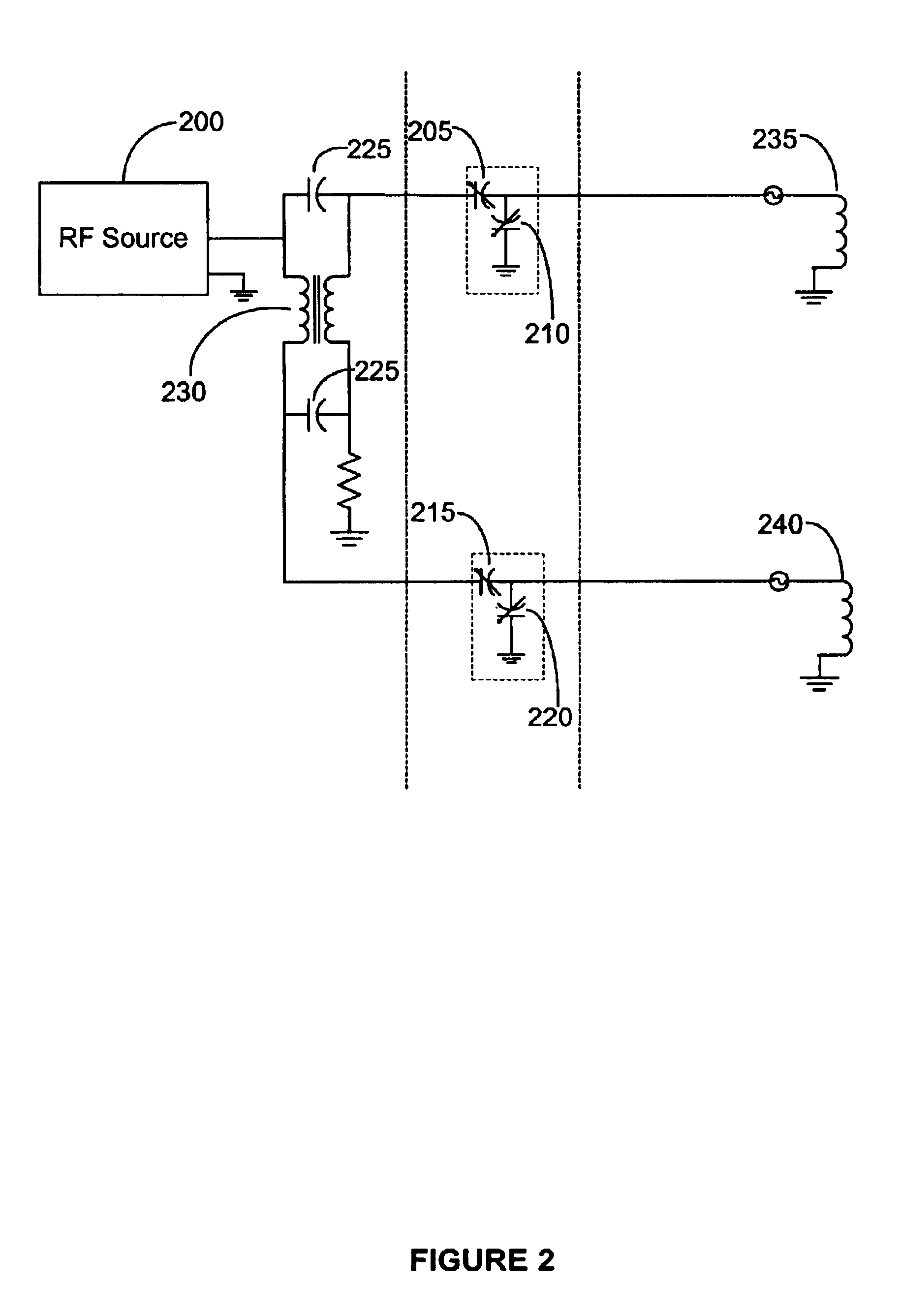Plasma production device and method and RF driver circuit
a technology of plasma production device and driver circuit, applied in the field of plasma generation system design and implementation, can solve the problems of affecting the antenna loading, difficult process for accurate tuning of these components, and limited degree of automation, and achieve the effect of efficient coupling rf sources
- Summary
- Abstract
- Description
- Claims
- Application Information
AI Technical Summary
Benefits of technology
Problems solved by technology
Method used
Image
Examples
Embodiment Construction
[0036]Turning first to the figures, FIG. 1 illustrates a plasma source chamber with two sets of antenna elements configured in accordance with an embodiment of the present invention. The antenna design includes two orthogonal single- or multi-turn loop elements 105, 110, 115, and 120, arranged about a common axis. The antenna elements 105, 110, 115, and 120 are each driven by RF power sources, A 125 or B 130 as shown. Each antenna loop may be coupled to the same RF power source with a phase splitter, or to distinct RF power sources, to drive the antenna elements in quadrature. Preferably the loops in the antenna are constructed from eight (8) gauge teflon coated wire although copper wire or other conductors may also be used.
[0037]FIG. 1 shows two orthogonal sets of two-element Helmholtz-coil-like loop antennas, with loop elements 105 and 115 in one set and loop elements 110 and 120 in the second set. The loop elements are wrapped azimuthally around an insulating cylinder 135 such th...
PUM
| Property | Measurement | Unit |
|---|---|---|
| length | aaaaa | aaaaa |
| length | aaaaa | aaaaa |
| output impedance | aaaaa | aaaaa |
Abstract
Description
Claims
Application Information
 Login to View More
Login to View More - R&D
- Intellectual Property
- Life Sciences
- Materials
- Tech Scout
- Unparalleled Data Quality
- Higher Quality Content
- 60% Fewer Hallucinations
Browse by: Latest US Patents, China's latest patents, Technical Efficacy Thesaurus, Application Domain, Technology Topic, Popular Technical Reports.
© 2025 PatSnap. All rights reserved.Legal|Privacy policy|Modern Slavery Act Transparency Statement|Sitemap|About US| Contact US: help@patsnap.com



